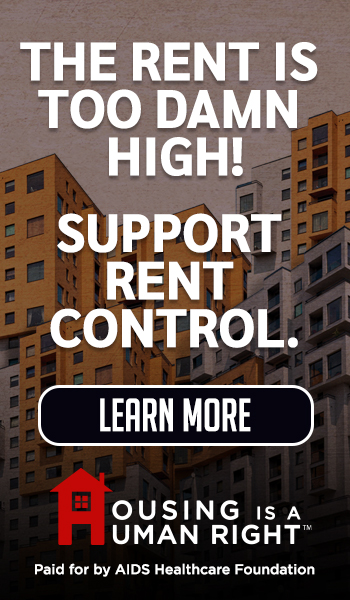Comments
MY VIEWPOINT - Housing near transit stops had long become a polarizing dispute between the determined “not in my backyard” folks and the vocal enthusiasts who said, “yes in my backyard.” This impasse between NIMBYs and YIMBYs was partially quashed when Gov. Gavin Newsom signed SB 79- the Abundant & Affordable Homes Near Transit Act-into law October 10, allowing buildings up to nine -story residential buildings adjacent to subway stops, seven stories within a quarter mile of them and six stories within a half mile in eight California counties.
The bill, effective July 1, 2026, will increase housing density around transit hubs through state intervention, overriding local zoning laws.
I have long advocated an urban development approach that balanced transportation, environmental sustainability, and community wellbeing, an idea once considered by many to be self-delusional. I yearned for the integration of rail, bus, and metro stations with land development to create accessible, livable and affordable communities.
Remarkably, the City of Los Angeles, which has insisted that the lack of housing created a homeless liability, opposed the measure.
In my book, “The Making of Modern Los Angeles,” I wrote that building around transit stations will help solve our housing crisis. The city’s opposition to the new law was perplexing, and short-sighted.
In fact, in 2016, the city had enacted a Transit Oriented Communities incentive program that encouraged developers to build taller, denser projects, and with less parking near transit stops if the developer included affordable housing.
Indeed, signing the bill was a grave disappointment for many local governments and neighborhood groups. Just last month. Mayor Bass strongly urged Newsom to veto the bill, saying that it would “erode local control, diminish community input on planning and zoning, and disproportionately impact low-resource neighborhoods.” The City Council passed a motion opposing it. Irate homeowner groups and state legislators raised concerns that mandating higher levels of housing density would “fundamentally reshape” suburban-style neighborhoods.
Actually, the bill provides two important enhancements: it allows for more housing construction to alleviate the housing shortage and its resulting affordability crunch; and it steers more residents towards cash-strapped public transportation systems.
In a statement, the governor said, “when we invest in housing, we are investing in people, their chance to build a future, raise a family and be part of a community.” Housing near transit means shorter communes, lower costs, and more time with family.
The signed measure was controversial and had undergone thirteen separate rounds of amendments. The law is restricted to eight highly urbanized counties — Los Angeles, San Diego, Orange, Santa Clara, Alameda, Sacramento, San Francisco, and San Mateo — and apply only to select transportation stops (train, subway, light rail, and high-frequency buses routes with designated lanes). It will also give local governments alternative means to comply with their own local programs, require a certain share of units constructed under the bill to be set aside at below-market rents and go into effect on a delayed schedule in certain lower income neighborhoods.
Over the next five years, cities may exempt properties located in areas of elevated fire risk, historic preservation districts, and low-resource neighborhoods. This measure is intended to minimize the bill’s potential impact on gentrification within economically disadvantaged communities.
Supporters of the bill pushed for it to apply to a greater number of transit stops, and more quickly. However, the compromises that scaled it back are the reason the bill passed. Some critics were outraged over what they call the “Beverly Hills carve-out.” In the final days of the legislative session, backers of the bill scaled back the amount of land targeted by SB 79 in cities with a population below 35,000, such as Beverly Hills and South Pasadena.
The law does not cover apartment buildings with three or more units if they fall under a city or county rent stabilization ordinance, which limits annual rent increases. This aims to minimize renter displacement.
I had long maintained that linking land use and transportation decisions creates the opportunity to accommodate regional and local growth in transit station areas, where future development can be well-served by the regional transportation system, with minimum impact on existing residential neighborhoods.
Los Angeles permitted over 17,200 homes last year, according to LAist. This far from the estimated 57,000 annual homes needed for yearly building to meet its goal of creating 456,643 new homes by 2029 according to LA City Planning.
During my presidency in the 80s on the Southern California Rapid Transit District Board of Directors, I worked with Gary Spivack, assistant general manager for operations, to develop joint development policies and procedures. Of course, excess land used in conjunction with the construction of the Metro Rail system was a new concept at that time in Los Angeles.
Our approach was to involve a partnership between a public agency and a private sector entity to develop infrastructure assets, generate long-term revenue for the transportation system, revitalize blighted areas, increase transit ridership and public safety.
The new law is transformative housing legislation that will speed up housing construction and reduce the costs. Further, it will literally create “a village” around transit stops, enhancing each neighborhood.
There are numerous advantages that are part of the signed legislation, such as the reduction of greenhouse gas emissions and urban sprawl, as well as economic growth driven by increased land values and greater visibility for businesses. Additional social benefits include improved public health resulting from increased walkability and stronger community engagement. Further, these developments support more effective use of public transit, enhance household affordability by reducing transportation expenses, and improve residents' access to employment opportunities and essential services.
According to LA Metro CEO Stephanie Wiggins "Communities are stronger when people have a diverse range of housing options, jobs, and services located near fast and frequent transit lines. We are doing our part to ease the housing shortage in LA County and make this region a more affordable, vibrant and sustainable place to live".
Michael Lens, a professor of urban planning and public policy at the Luskin School of Public Affairs said "There`s just not that many homes that a diversity of people can live in. It`s kind of double-edged problem of scarcity".
The baby boomer generation, and every generation, has a moral obligation to make it possible for future generations to realize the American dream of home ownership and an environmental, economic and social system at least no worse than the one they inherited.
This is true progress, and the words of President Franklin Delano Roosevelt spoken at his inaugural address on January 20, 1937, ring true: "The test of our progress is not whether we add more to the abundance of those who have much; it is whether we provide enough for those who have too little."
--
(Nick Patsaouras is an electrical engineer and civic leader whose firm has shaped projects across residential, commercial, medical, educational, institutional, and entertainment sectors. A longtime public advocate, he ran for Mayor in 1993 with a focus on rebuilding L.A. through transportation. He has served on major public boards, including the Department of Water and Power, Metro, and the Board of Zoning Appeals, helping guide infrastructure and planning policy in Los Angeles. He is the author of the book "The Making of Modern Los Angeles.")















